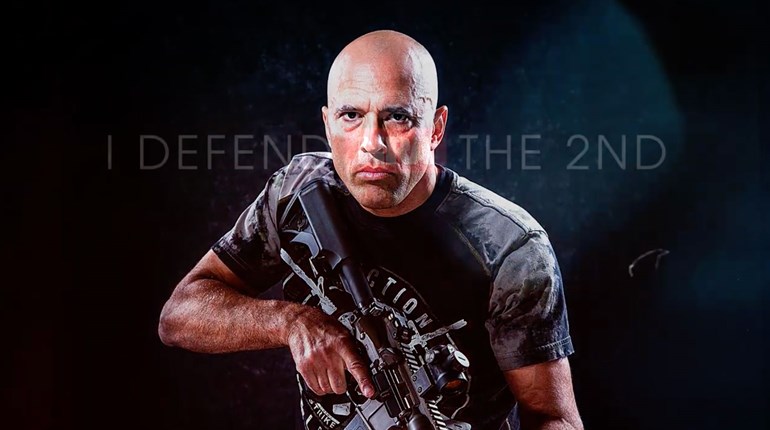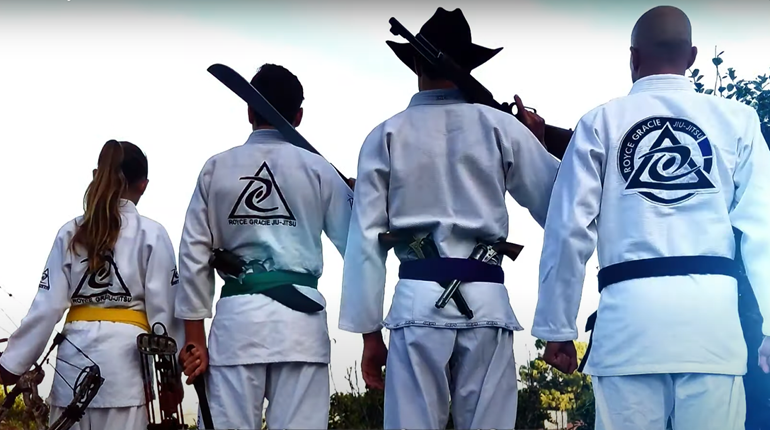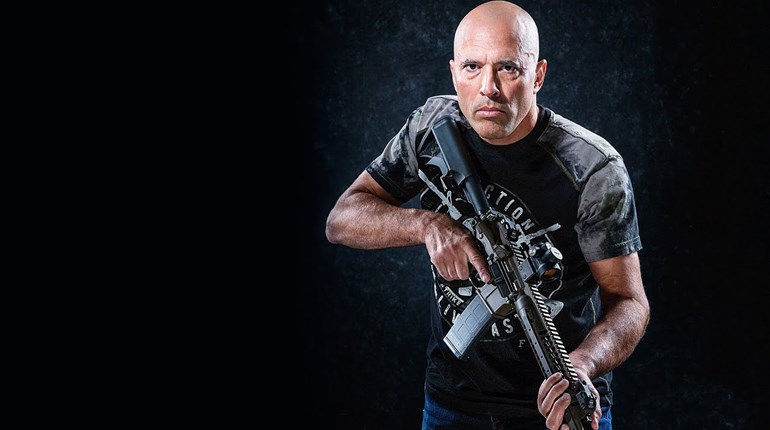
If you’ve heard of Brazilian jiu-jitsu, mixed-martial arts or the UFC, the reason is Royce Gracie. In the early 1990s, his dominance of the octagon brought his family’s style of jiu-jitsu into the American mainstream, and the martial art has become immensely popular around the world ever since. In addition to his hand-to-hand combat skills, Gracie is also a fan of firearms and the Second Amendment. Editor-in-Chief Ed Friedman sat down with Gracie to discuss his career, his love of freedom and his interest in guns.
SI: How did you get interested in firearms?
Royce Gracie: Growing up in Brazil, my dad had a few guns on our farm. It’s part of martial arts. Sure, they say it’s “empty hands,” but so many styles use weapons, so it’s part of the martial arts culture. When I came to America and saw the freedom that we have, I was blown away. Back in the early days, we had a friend who would take us to the range, and we’d shoot 100 rounds through a .45 ACP 1911. Our goal was to make the bullseye disappear, and I got the shooting bug. Shooting is an art. You need to know what you’re doing, how to be safe, to recognize the skill needed to control that power. It’s a lot like martial arts in that way.
SI: What makes someone who is so skilled in unarmed self-defense feel the need to own firearms?
Royce Gracie: What if there’s more than one person? What if the adversary is armed? If it’s just one guy who’s not armed, yeah, I can take care of him. But what if he pulls a gun? What if there’s more than one attacker and they have knives? What happens if there’s a terrorist attack? I’ve got a mentality that I’m going to try to stop an attack no matter what, but if he’s got a gun, that’s suicidal if I’m not armed. Also, if a criminal is attacking other people, it’s not always feasible for even someone with my skills to stop that attack without a firearm.
Attackers aren’t going to make it a fair fight. They launch surprise assaults; they try to take you out to get to your family or your property. It’s not the octagon. There’s no referee. And if he pulls a weapon, he’s not just trying to fight me—he’s trying to kill me. At that point, you’d be crazy to try to go hand to hand. I have a gun to defend myself if the situation escalates like that.
SI: Tell me a little about the situation in Brazil as it pertains to gun ownership and crime.
Royce Gracie: Brazil never had the degree of freedom we have in the U.S., but you used to be able to buy some guns. There were restrictions, but there were shops we could go to. Then, they essentially banned civilian ownership guns in what they said was an effort to fight crime. That resulted in the criminals arming themselves to the teeth. I mean, they had RPGs and machine guns. They get it from corrupt officials. Violence got out of control after that. It was like the law switched to protect the bad guys. So at the same time they disarmed the law-abiding citizens, they made life easier on the criminals. The murder rate went through the roof. It’s so bad, the prisoners in jails get better food than the police!
SI: Why do people sign up for your classes? What is it about Brazilian jiu-jitsu that is so popular?
Royce Gracie: The main reason people go to any martial arts school is to gain confidence by learning skills. They may have had something happen to them or seen a situation that they didn’t know how to react to. That stays with them—they don’t go right away to learn about self-defense, but that thought stays filed away. Then one day a friend will say “Hey, I’m learning this martial art; let’s go check it out.” Then they go to class and start to get the hang of it. It’s a lot of the same reasons why people buy a gun for the first time. People realize they’re vulnerable, but it often takes a while. It’s not like they see a fight and say, “I need to learn a martial art,” but a while later that thought comes to the front and they sign up for a class. It’s really all about the skills you need to be confident. Parents sign their kids up for the same reason; for the confidence that can come with the discipline that martial arts provide.
SI: What can people expect to learn in a Royce Gracie-taught class?
Royce Gracie: I teach them self-defense. I don’t teach competition. Martial arts were made to defend yourself. A lot of schools teach you how to score points, but that’s not real life. Competition can ruin a martial art. I teach how to defend yourself in a street-fight situation. Why do you buy a gun? Sure, there are a small number of people who want to be the best competitive shooter in the world, but for most of us, it’s for self-defense. And maybe that leads to competition, which is fine, but that’s not why you signed up for a martial arts class or why you bought that first gun.
SI: What drew you to the NRA? How important is the Second Amendment to you?
Royce Gracie: The National Rifle Association is the front line of keeping my right to keep and bear arms. That’s the way I look at it. I really respect the NRA, because I know from experience, from what happened to Brazil, how important the Second Amendment is. It is my right to defend myself, and the NRA makes sure that right will be there. Look what happened when they took those rights away in Brazil, in Venezuela—it is vital to keep that right.

Want to take a class with Royce Gracie? Visit NRACarryGuardExpo.com today to sign up for the (limited-space) Brazilian jiu-jitsu class he will teach at the inaugural Carry Guard Expo in Milwaukee, WI, Aug. 25 to 27. Gracie will teach paying attendees several moves that could come in handy should you find yourself in a close-quarters criminal attack. He will also be signing autographs at the show. In addition, there will be seminars from world-class instructors like Steve Tarani, Travis “Doc T” and many others, so you won’t want to miss the best event for those interested in self-defense.





































